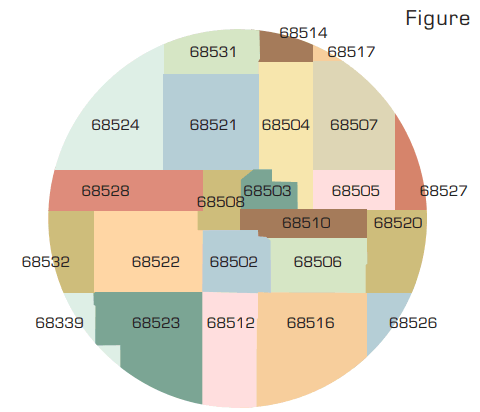As a community, we have learned much about risk factors for patients undergoing hematopoietic cell transplantation (HCT). Some factors reflect the patient and his or her physique. The most primitive scale has been the Karnofsky or the ECOG performance statuses, both of which are still widely used but are fairly crude measurements. The more recent adoption of comorbidity scales has significantly improved our ability to predict which patients are at very high risk for HCT. Other factors reflect the malignancy, such as the stage of the disease, the remission status, the cytogenetics of the tumor, disease sites, and number of prior therapies, to name a few. These measurements reflect the individual and the biology of the malignancy in that particular person ― more of the nature of the disease. But what about nurture? Specifically, are there factors in the patient’s environment that could make a difference?
Some of the earliest applications of ZIP code data were for use in customer acquisition promotions, direct mail, and telemarketing. If one lived in a high-rent district, it would be a prime area for marketing. In contrast, poor or rural areas were spared. The rationale was obvious in that the high-rent districts had access to disposable income and perhaps better services. This process of targeting specific ZIP codes has continued precisely because it worked well. If this is the case, then the reverse should also be true. Poorer or rural areas could be expected to have less disposable income and poorer services, including access to health care.
A recent paper published in Biology of Blood and Marrow Transplantation explored whether a patient’s area of primary residence is an independent risk factor for overall survival (OS) after HLA-identical sibling or autologous HCT. This was a retrospective cohort study that included patients who had undergone autologous (n=1739) or HLA-identical sibling (n=267) HCT to treat a hematologic malignancy between 1983 and 2004 at the University of Nebraska Medical Center. Primary area of residence, using the patient’s ZIP code, was categorized as either urban or rural (including isolated, small rural, or large rural), according to the Rural Urban Commuting Area Codes (RUCA) classification system. An association between area of primary residence and survival was examined using Cox proportional hazards regression analysis while adjusting for patient-, disease-, and treatment-related variables. Patients from rural areas who received autologous HCT had a higher relative risk (1.18) of death compared to urban patients. Survival rates in patients from rural and urban locations were as follows: one year, 73 percent versus 78 percent (P=.04); five year, 48 percent versus 54 percent (P=.012). There were no differences in the allogeneic population, although the number of patients was more limited.
In Brief
It is important to recognize that this was a retrospective analysis, and thus there were no controls for important variables such as comorbidities, income, distance traveled, educational status, etc. However, these data raise interesting questions since the disparity in survival was related to treatment toxicity. Many of these toxicities, especially those in the intermediate to long term, are preventable or treatable if detected early. Moreover, some of the toxicities, such as interstitial pneumonitis in autologous HCT, are frequently recognized and treated in transplant centers. However, in a more rural community under the care of a general practitioner, this complication may not be readily recognized and treated. The distance that a patient has to travel may also affect how often or even whether a patient wants to return for a follow-up visit to a transplant center. These data do raise important issues for planning for discharge, and a comprehensive plan for communications and follow-up should be in place for all patients. While health-care inequities are not new, they should not be ignored.
Competing Interests
Dr. Chao indicated no relevant conflicts of interest.

